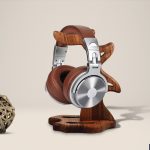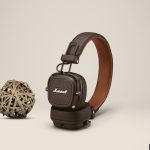
When you purchase headphones or speakers, you may get confused because there are plenty of models available with a plethora of features. So, nobody wants to spend money on subpar headphones or speakers that will fail to deliver in terms of performance. Hence, the drivers are essential in this case because they determine the sound quality and performance of headphones and speakers.
If you have found yourself reading this article, you probably want to know the differences between 40mm and 50mm drivers. Then, this is the right place to start, since I will compare those two in this article and try to explain everything in the streets ahead. Keep reading, though!
Key Takeaways
- If you are into audio devices, you should make clear what an audio driver means and understand its importance.
- Audio drivers are the main parts of an audio device that transform the electrical signal into sound.
- There are some differences between 40mm drivers and 50mm drivers.
- If you are into bass and want a dynamic sound, then audio devices with 50mm drivers are what you should go for.
- Audio devices with a 40mm driver would be the best pick for a more natural and smooth sound.
Audio Drivers – What do They Represent

Have you ever wondered what makes your headphones, speakers, and other audio devices provide sound? Most probably, you have thought of it, but you have never tried to find the answer and see whether there is some particular part in your audio devices that does such an important job. As you can assume, I didn’t write this paragraph just for fun since an audio driver is the one that gets the job done.
Basically, an audio driver transforms the electrical signals into sound. It is a known fact that without an audio driver, there won’t be a sound that we can hear. There is no need to mention an audio driver’s incomparable and fantastic role in any audio device. This was a brief and straightforward explanation of what an audio driver’s role is.
Nonetheless, let me also mention the main parts of an audio driver, such as the magnets, voice coils, and a vibrating diaphragm. All of them have different chores that make an audio driver function properly. Magnets create a magnetic field that most of the time has an important impact on the sound quality, voice coils have the duty to move the diaphragm to create the sound we hear, and finally, the diaphragm’s job is to vibrate and complete the final sound that we need to hear.
40mm Vs. 50mm Drivers – Head-to-Head Comparison

Mids and Trebles
I will first discuss the mids and trebles and see which drivers will take the trophy in this competition. For those who are not familiar with what mids and trebles are, I will write a short explanation.
Trebles or high frequencies in audio, the frequency range for highs is from 4000Hz to 20kHz. If the highs or in other words, trebles, are well expressed, you will be able to hear a brighter sound.
Mids are the frequencies that stay in between the frequencies of highs and lows. The frequency response that refers to mids is between 250Hz and 4000Hz. The mids provide a more neutral and, at the same time, natural sound, so in an audio device where the mids function well, you will get a balanced sound.
You will get amazing trebles and mids if your audio device has a 40mm driver. 40mm drivers provide a gauzy sound, which most listeners want to hear. The sound you will get from your headphones and speaker will be as natural as possible, and the sound will also have a soft touch. Using an audio device with a 40mm driver, you will hear everything in detail, especially the vocals.
What about the audio devices with 50mm drivers? I can’t claim that they suck in mids and highs, but compared to 40mm drivers, they fall in this category. A 50mm driver will offer great results in high frequencies, but I can’t claim the same for mids. Audio devices with 50mm drivers will provide more powerful sound that doesn’t refer to the neutral sound you may like to hear.
Bass
Besides the fact that most of us are not familiar with mids and trebles, it is different for bass. Bass is a common word for many listeners, representing the low frequencies of a sound. The frequency range of bass is between 20Hz and 250Hz. The audio devices that express the lows well always provide more powerful sound.
The bass response is the one that differentiates the 40mm driver and 50mm driver. If you want to hear a powerful sound, then the bass should be produced by a larger diaphragm. As we already know, 50mm drivers have a larger diaphragm, which is why 50mm drivers are unbeaten in this category. If you own an audio device equipped with a 50mm driver, you should be sure that you will get an immersive bass, which refers to a dynamic sound.
A 40mm driver cannot provide the dynamic sound because of its smaller diaphragm. So, an audio device with a 40mm driver can’t compete with a 50mm driver in this category. Since the duty of a 40mm driver is to provide natural sound, not the powerful one.
Sound quality
A larger driver doesn’t refer to better sound quality. I mean, it all depends on your demand, though. For those who want to hear a powerful and dynamic sound, then we can safely assume that 50mm drivers will provide fantastic sound quality.
For instance, if you want to listen to something relaxing and smooth, 40mm drivers are your go-to since you will get a soft sound, all-natural, and better vocals.
As you can see, it all depends on your preferences and demands.
Final Words
I have mentioned a ton of things in this article, and I think that it is more than enough for you to have a better understanding of 40mm drivers and 50mm drivers. Without any doubt, your requirements will change depending on the usage.
Overall, from my experience, I prefer the 50mm drivers more since I find the bass to be a crucial aspect of the “listening to music experience”.
Further Reading
Now that we have talked about drivers, let me suggest for you to read about some of the most common issues that might occur with your audio equipment, such as why is your right airpod so quiet, or how to pair altec lansing Bluetooth speaker, or you can find out if you can wear AirPods in a tanning bed, and you can also read about how to fix static noise in headphones.
Mix & Mastering
I love to get my hands on all sorts of audio equipment, from headphones and speakers to audio interfaces. I love putting these products through their paces and seeing what they can do.





